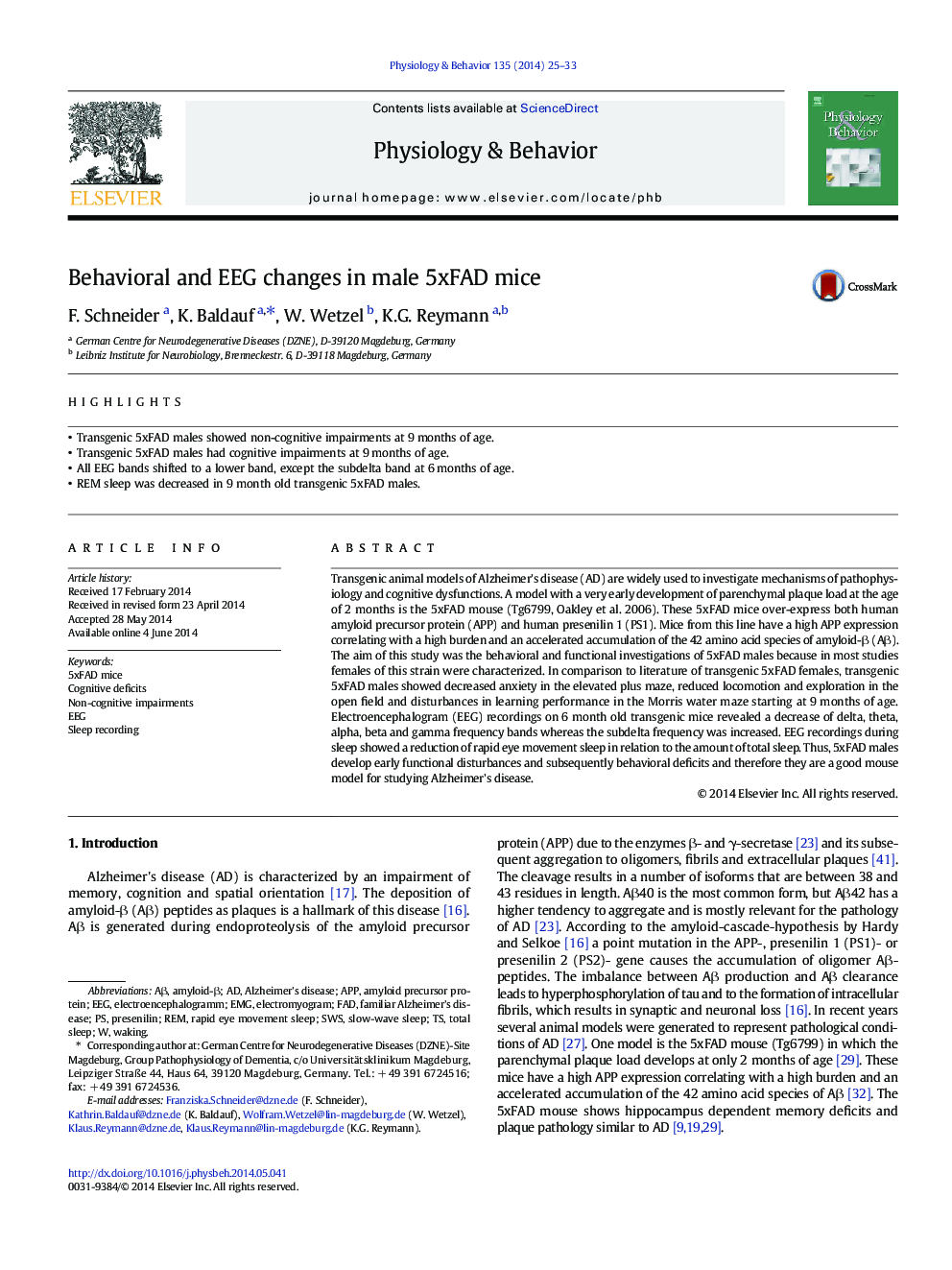| کد مقاله | کد نشریه | سال انتشار | مقاله انگلیسی | نسخه تمام متن |
|---|---|---|---|---|
| 2844241 | 1571182 | 2014 | 9 صفحه PDF | دانلود رایگان |

• Transgenic 5xFAD males showed non-cognitive impairments at 9 months of age.
• Transgenic 5xFAD males had cognitive impairments at 9 months of age.
• All EEG bands shifted to a lower band, except the subdelta band at 6 months of age.
• REM sleep was decreased in 9 month old transgenic 5xFAD males.
Transgenic animal models of Alzheimer's disease (AD) are widely used to investigate mechanisms of pathophysiology and cognitive dysfunctions. A model with a very early development of parenchymal plaque load at the age of 2 months is the 5xFAD mouse (Tg6799, Oakley et al. 2006). These 5xFAD mice over-express both human amyloid precursor protein (APP) and human presenilin 1 (PS1). Mice from this line have a high APP expression correlating with a high burden and an accelerated accumulation of the 42 amino acid species of amyloid-β (Aβ).The aim of this study was the behavioral and functional investigations of 5xFAD males because in most studies females of this strain were characterized. In comparison to literature of transgenic 5xFAD females, transgenic 5xFAD males showed decreased anxiety in the elevated plus maze, reduced locomotion and exploration in the open field and disturbances in learning performance in the Morris water maze starting at 9 months of age. Electroencephalogram (EEG) recordings on 6 month old transgenic mice revealed a decrease of delta, theta, alpha, beta and gamma frequency bands whereas the subdelta frequency was increased. EEG recordings during sleep showed a reduction of rapid eye movement sleep in relation to the amount of total sleep. Thus, 5xFAD males develop early functional disturbances and subsequently behavioral deficits and therefore they are a good mouse model for studying Alzheimer's disease.
Journal: Physiology & Behavior - Volume 135, August 2014, Pages 25–33